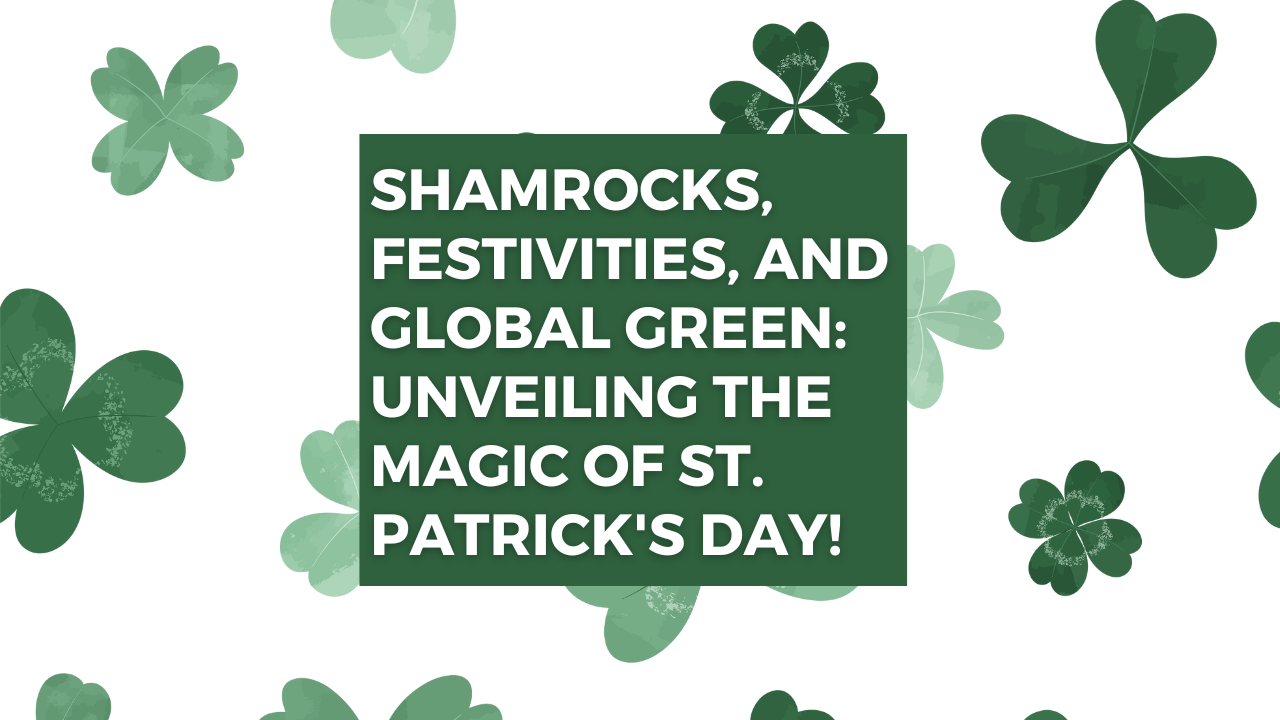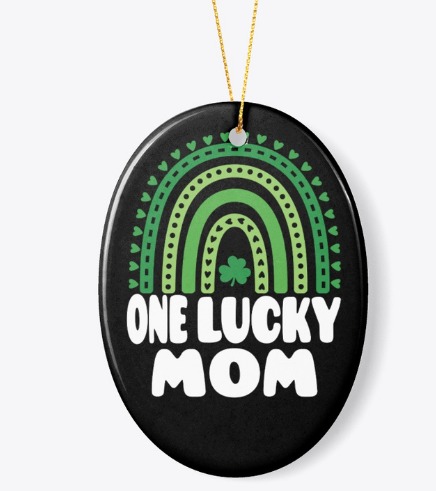Introduction:
St. Patrick’s Day, celebrated on March seventeenth, has a wealth of records intertwined with Irish tradition. Its origins can be traced back to the banquet day of St. Patrick, the patron saint of Ireland. The party has developed over time, turning into a global phenomenon marked by means of parades, colorful festivities, and a sea of inexperienced. This article explores the diverse facets of St. Patrick’s Day, from its ancient roots to its present-day significance.
St. Patrick: The Patron Saint of Ireland:
St. Patrick, at the start a Roman-British missionary, played a pivotal role in spreading Christianity throughout Ireland. His legendary deeds, including banishing snakes and the usage of the shamrock to give an explanation for the Holy Trinity, have grown to be iconic symbols related to the birthday celebration. Understanding St. Patrick’s lifestyles illuminates the deep connection among the saint and the Irish people.
Join The Design Revolution This St. Patrick’s Day! Craft Your Own Luck With Our Custom Designs
St. Patrick’s Day Legends and Symbols:
The shamrock’s symbolism and the folklore surrounding St. Patrick’s banishment of snakes make contributions to the paranormal charisma of the birthday celebration. These legends have ended up indispensable to St. Patrick’s Day, fostering a feel of culture and mystique.
Global Celebrations:
St. Patrick’s Day transcends Irish borders, with countries worldwide embracing the festivities. Iconic parades and activities show off the global network’s participation in celebrating Irish lifestyle, reinforcing the vacation’s typical appeal.
St. Patrick’s Day Traditional Irish Cuisine:
St. Patrick’s Day is synonymous with traditional Irish cuisine. Popular dishes like corned red meat and cabbage keep a unique region in the hearts and stomachs of celebrants, reflecting the culinary effect of the Irish way of life around the sector.
St. Patrick’s Day Green Tradition:
The shade green, from garb to decorations, is ubiquitous throughout St. Patrick’s Day celebrations. Understanding the ancient significance of this tradition provides intensity to the visible spectacle and reinforces an experience of cultural harmony.
Join The Design Revolution This St. Patrick’s Day! Craft Your Own Luck With Our Custom Designs
Fun and Festivities:
Music, dance, and unique customs define St. Patrick’s Day festivities. From conventional Irish tunes to energetic jigs, the birthday celebration is a fusion of joyous activities that join people to the coronary heart of Irish subculture.
St. Patrick’s Day in Modern Times:
As St. Patrick’s Day evolves within the contemporary generation, the impact of globalization on traditions is obvious. The celebration now reflects a blend of traditional and modern factors, making it greater on hand to diverse audiences around the world.
DIY St. Patrick’s Day Crafts:
Engaging in creative and smooth crafts at home is a satisfying way to celebrate St. Patrick’s Day with family. These DIY activities decorate the private connection to the festivities, fostering a sense of pleasure and togetherness.
Join The Design Revolution This St. Patrick’s Day! Craft Your Own Luck With Our Custom Designs
St. Patrick’s Day in Popular Culture:
References to St. Patrick’s Day in films, TV shows, and literature have solidified its location in famous culture. Analysing these cultural nods gives perception into how the party has permeated diverse styles of leisure.
Travel Destinations for St. Patrick’s Day:
Notable places to visit all through St. Patrick’s Day provides specific neighbourhood traditions that increase the overall enjoyment. Exploring those destinations provides a firsthand understanding of the diverse ways in which the holiday is well known.
St. Patrick’s Day and Irish Heritage:
The celebration serves as an effective connection to Irish roots, fostering cultural exchange and information. St. Patrick’s Day becomes a worldwide celebration of the Irish historical past, uniting humans from one-of-a-kind backgrounds.
Environmental Impact:
Incorporating eco-friendly practices for the duration of St. Patrick’s Day aligns with the developing emphasis on sustainability. From parades to activities, adopting green practices contributes to an extra environmentally conscious birthday celebration.
St. Patrick’s Day Merchandise:
Popular items and souvenirs associated with St. Patrick’s Day reflect the industrial component of the holiday. Examining online purchasing trends sheds light on the evolving client possibilities and the global market for St. Patrick’s Day merchandise.
Is St. Patrick’s Day a holiday?
Yes, Saint. Patrick’s Day is widely celebrated as a cultural and spiritual vacation. It commemorates the death of Saint. Patrick, the consumer saint of Ireland, and has advanced into a worldwide celebration of Irish lifestyle and history. While it isn’t always a respectable public excursion in lots of places, it is extensively identified and discovered with festivities, parades, and diverse cultural occasions on March seventeenth each year.
what does Saint. Patrick’s Day mean?
St. Patrick’s Day, celebrated annually on March 17th, holds each cultural and non-secular significance. Initially a non-secular observance honouring St. Patrick, the customer saint of Ireland, it has advanced right into a broader party of Irish lifestyle and history. The day is marked by means of various traditions, which includes carrying green apparel, parades, the show of shamrocks (three-leafed clovers), and the leisure of traditional Irish foods and drinks. St. Patrick’s Day serves as a unifying party that brings human beings collectively globally to realize Irish contributions to history, religion, and tradition.
How is St Patrick’s day celebrated in Ireland?
In Ireland, St. Patrick’s Day is widely known with a mixture of non-secular observances, cultural activities, and energetic festivities. Some commonplace approaches wherein the day is celebrated in Ireland encompass:
Religious Services:
St. Patrick’s Day frequently begins with religious services in church buildings across the US, honouring St. Patrick.
Parades:
Cities and cities for the duration of Ireland host vibrant parades presenting colorful floats, conventional track, and lively performances. Dublin’s St. Patrick’s Day parade is particularly famed for its grandeur.
Wearing of Green:
People across Ireland include the subculture of sporting inexperienced apparel, add-ons, or even face paint as a symbol of Irish pride.
Traditional Irish Cuisine:
The day is marked by means of indulging in traditional Irish dishes, which include corned beef and cabbage, Irish stew, and soda bread.
Cultural Events:
Various cultural occasions, which includes live shows, dance performances, and art exhibitions, showcase the richness of Irish heritage.
Community Celebrations:
Local groups frequently organize smaller celebrations, fostering an experience of togetherness with buddies and friends.
Public Holiday:
St. Patrick’s Day is a public excursion in Ireland, taking into consideration a day without work and faculty, giving human beings the possibility to fully have interaction in the festivities.
Street Festivals:
Many cities prepare street fairs with food stalls, live tunes, and entertainment, growing energetic and festive surroundings.
Traditional Music and Dance:
Irish music and dance play a good-sized function in celebrations, with conventional tunes and energetic step dancing fascinating audiences.
Ceremonial Lighting:
Some landmarks and buildings are illuminated in green lighting fixtures to mark the occasion, contributing to the overall festive environment.
Overall, St. Patrick’s Day in Ireland is a dynamic and joyous birthday party that combines non secular reverence with cultural delight, developing a completely unique and spirited ecosystem at some stage in the United States.
When is St Patrick’s day 2024 in Ireland?
St. Patrick’s Day in 2024 will fall on Saturday, March 17th, in Ireland. As an annual birthday party, the date remains consistent each 12 months, presenting an opportunity for people in Ireland and round the world to engage in festivities on this special day.
Does St Patrick’s day change every year?
No, St. Patrick’s Day does not change every year. It is consistently celebrated on March 17th each year. This fixed date honours the death of St. Patrick, the patron saint of Ireland, and has become a tradition that remains constant, allowing people to anticipate and plan celebrations for the same date annually.
What is the significance of the shamrock on St. Patrick’s Day?
- The shamrock holds enormous symbolism on St. Patrick’s Day, serving as an iconic logo deeply rooted in Irish way of life and the birthday party of St. Patrick, the purchaser saint of Ireland.
Here are the important thing factors of its importance:
- Religious Symbolism: St. Patrick, credited with bringing Christianity to Ireland, is stated to have used the 3-leafed shamrock to explain the idea of the Holy Trinity (Father, Son, and Holy Spirit) to the Irish humans. The shamrock’s 3 leaves signify the cohesion of these three divine entities in one.
- Cultural Identity: The shamrock has turned out to be an effective symbol of Irish identification and heritage. Its affiliation with St. Patrick’s Day extends past religious importance to symbolize the wider party of Irish way of life and satisfaction.
- Good Luck and Protection: In Irish folklore, the shamrock is likewise taken into consideration as a symbol of appropriate success and safety. It has been traditionally believed that sporting a shamrock ought to ward off evil spirits and produce true fortune.
- National Symbol: The shamrock is often associated with Ireland as an entire and is considered a countrywide image. Its incidence on St. Patrick’s Day reinforces the connection among the holiday and the Irish human beings, each in Ireland and around the sector.
- Iconic Representation: In the context of St. Patrick’s Day celebrations, the shamrock is extensively used as an ornamental motif, acting on apparel, accessories, and various festive decorations. Its presence reinforces the holiday’s cultural and spiritual issues.
Overall, the shamrock’s importance on St. Patrick’s Day is multifaceted, encompassing spiritual, cultural, and symbolic dimensions. It remains a cherished and recognizable emblem that unites humans in the birthday celebration of Irish heritage and the spirit of St. Patrick.
How can I celebrate St. Patrick’s Day in an eco-friendly way?
- Celebrating St. Patrick’s Day in a green manner isn’t always only a laugh however additionally contributes to sustainability. Here are a few eco-conscious thoughts to make your St. Patrick’s Day birthday party more environmentally pleasant:
1. Choose Sustainable Decorations:
- opt for reusable and eco-friendly decorations. Consider using cloth banners, recycled paper decorations, or even items you already have at home. After the party, shop them for destiny use.
2. Eco-Friendly Attire:
- Wear inexperienced garb or accessories which you already have as a substitute for purchasing new gadgets. If you are feeling innovative, consider making your own St. Patrick’s Day apparel from upcycled materials.
3. Organic and Local Food:
- When getting ready or buying food for your celebration, prioritize natural and domestically sourced components. This reduces the carbon footprint associated with transportation and helps nearby farmers.
4. Zero-Waste Party Supplies:
- opt for reusable plates, utensils, and cups. If disposable objects are essential, pick out compostable or biodegradable options. Encourage visitors to bring their reusable bins for leftovers.
5. Sustainable Beverage Choices:
- Choose locally brewed or Irish beers and ciders. Consider serving beverages in glass packing containers rather than unmarried-use plastics. Provide recycling bins for visitors to effortlessly dispose of their recyclables.
6. Carpool or Use Public Transportation:
- If you’re attending a St. Patrick’s Day occasion, recall carpooling with friends or the usage of public transportation. This reduces the environmental impact of character car journeys.
7. Host an Outdoor Celebration:
- Take gain of outside areas on your birthday celebration. Natural lights and clean air get rid of the need for immoderate indoor lighting and aircon, reducing strength consumption.
8. Plant a Shamrock or Flowers:
- Embrace the symbolism of the shamrock by planting one in your garden. Alternatively, consider gifting potted plants or vegetation to buddies and family in preference to conventional cut flora.
9. DIY Eco-Friendly Crafts:
- Engage in St. Patrick’s Day crafts using recycled substances. Create decorations or celebration Favors from items you already have at home, reducing the need for brand new materials.
10. Educate and Advocate:
- Use the party as a possibility to educate others about green practices. Share pointers with pals and circle of relatives, encouraging them to undertake greater sustainable conduct.
- By incorporating those green practices into your St. Patrick’s Day birthday party, you may experience the festivities at the same time as minimizing your environmental effect. Small, conscious alternatives collectively make a contribution to a greener and extra sustainable world.
Are there any travel destinations known for unique St. Patrick’s Day celebrations?
Certainly! Several destinations around the world are renowned for their unique and vibrant St. Patrick’s Day celebrations. Here are a few travel destinations where you can experience distinct and memorable festivities:
1. Dublin, Ireland:
As the capital of Ireland, Dublin hosts one of the largest and most iconic St. Patrick’s Day parades. The city comes alive with music, dance, and cultural events, creating an atmosphere of joy and celebration.
2. New York City, USA:
The St. Patrick’s Day Parade in New York City is one of the oldest and largest in the world. The parade marches along Fifth Avenue, attracting millions of spectators. The city’s landmarks, including the Empire State Building, are often illuminated in green to mark the occasion.
3. Chicago, USA:
Chicago is known for its unique St. Patrick’s Day tradition of dyeing the Chicago River green. The vibrant green river, combined with a festive parade, makes the celebration in Chicago a one-of-a-kind experience.
4. Boston, USA:
Boston hosts a historic St. Patrick’s Day Parade that dates back to 1901. The city’s Irish heritage is celebrated with traditional music, dance, and a strong sense of community spirit.
5. Buenos Aires, Argentina:
Buenos Aires boasts one of the largest St. Patrick’s Day celebrations in South America. The city’s Irish community organizes events, including parades and cultural festivals, creating a lively and inclusive atmosphere.
6. Sydney, Australia:
Sydney’s St. Patrick’s Day Parade and Family Day draw locals and tourists alike. The festivities include traditional Irish music, dance performances, and family-friendly activities, creating a lively and multicultural celebration.
7. London, United Kingdom:
London hosts a St. Patrick’s Day Parade and Festival, featuring Irish dancers, musicians, and vibrant floats. Trafalgar Square becomes the focal point for celebrations, offering a taste of Irish culture in the heart of the city.
8. Montreal, Canada:
Montreal’s St. Patrick’s Day Parade is the longest running in Canada. The city’s Irish heritage is celebrated with a lively procession, music, and cultural events.
9. Tokyo, Japan:
Tokyo has embraced St. Patrick’s Day with parades, Irish dance performances, and themed events. The celebrations attract both locals and expatriates, creating a unique fusion of cultures.
10. Munich, Germany:
Munich hosts a St. Patrick’s Day Parade and a weekend-long celebration that showcases Irish culture. The city’s Irish pubs and venues become hubs for traditional music and dance.
These destinations offer diverse experiences, each with its own cultural flair, making them excellent choices for those seeking unique St. Patrick’s Day celebrations around the world.
Conclusion:
In the end, St. Patrick’s Day is extra than simply a celebration; it’s far a cultural phenomenon that unites human beings internationally. As we revel in the festivities, it’s far vital to celebrate responsibly, making sure the maintenance of tradition while embracing the evolving nature of this worldwide Irish birthday celebration.





